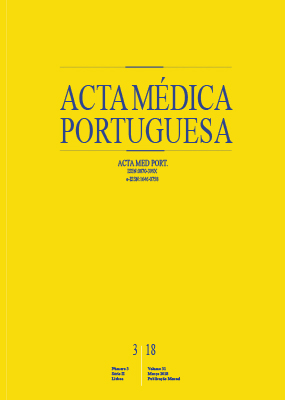Multiple Victims of Carbon Monoxide Poisoning in the Aftermath of a Wildfire: A Case Series
DOI:
https://doi.org/10.20344/amp.9811Keywords:
Brain Diseases, Carbon Monoxide Poisoning, Hyperbaric Oxygenation, Hypoxia, Brain, Portugal, WildfiresAbstract
Introduction: Carbon monoxide poisoning may occur in several contexts.
Material and Methods: Retrospective of 37 carbon monoxide poisoning cases that underwent hyperbaric oxygen during wildfires in Funchal in August 2016.
Results: The studied sample included 37 patients, mean age of 38 years, 78% males. Ten were firefighters, four children and two pregnant victims. Neurological symptoms were the most reported. Median carboxyhemoglobin level was 3.7% (IQR 2.7). All received high-flow oxygen from admission to delivery of hyperbaric oxygen. Persistence of symptoms was the main indication for hyperbaric oxygen. Median time to hyperbaric oxygen was 4.8 hours (IQR 9.5), at 2.5 ATA for 90 minutes, without major complications. Discharge in less than 24 hours occurred in 92% of the cases. Thirty days follow-up: five patients presented clinical symptoms of late neurological syndrome; twelve patients were lost to follow-up. Carboxyhemoglobin levels on admission and mean time to hyperbaric oxygen were no different between those who did and did not develop the syndrome at 30 days (p = 0.44 and p = 0.58, respectively).
Discussion: Late neurological syndrome at 30 days occurred in 20% and no new cases were reported at 12 months.
Conclusion: Use of hyperbaric oxygen appears to have reduced the incidence of the syndrome. This seems to be the first Portuguese series reporting use of hyperbaric oxygen in carbon monoxide poisoning due to wildfires. The authors intend to alert to the importance of referral of these patients because the indications and benefits of this treatment are well documented. This is especially important given the ever-growing issue of wildfires in Portugal.
Downloads
Downloads
Published
How to Cite
Issue
Section
License
All the articles published in the AMP are open access and comply with the requirements of funding agencies or academic institutions. The AMP is governed by the terms of the Creative Commons ‘Attribution – Non-Commercial Use - (CC-BY-NC)’ license, regarding the use by third parties.
It is the author’s responsibility to obtain approval for the reproduction of figures, tables, etc. from other publications.
Upon acceptance of an article for publication, the authors will be asked to complete the ICMJE “Copyright Liability and Copyright Sharing Statement “(http://www.actamedicaportuguesa.com/info/AMP-NormasPublicacao.pdf) and the “Declaration of Potential Conflicts of Interest” (http:// www.icmje.org/conflicts-of-interest). An e-mail will be sent to the corresponding author to acknowledge receipt of the manuscript.
After publication, the authors are authorised to make their articles available in repositories of their institutions of origin, as long as they always mention where they were published and according to the Creative Commons license.









